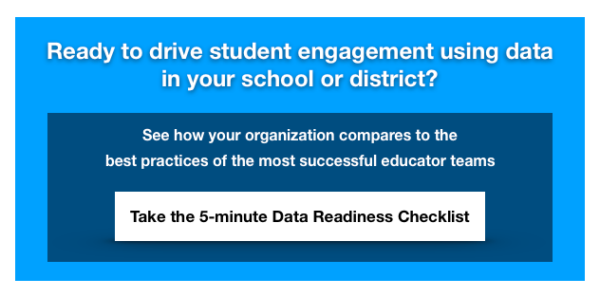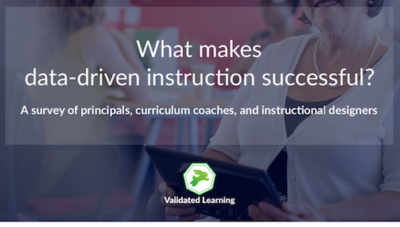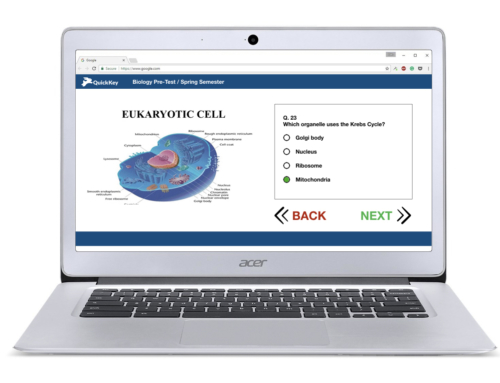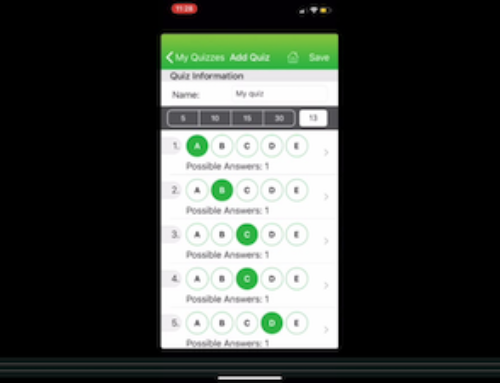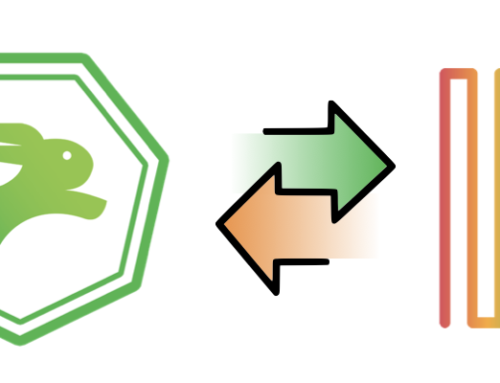In this interview, proven school turnaround leader Marlon Davis, Ed.M. talks about why he got into education, how he became a school leader, and how he leveraged family engagement and student assessment data to turn around two schools before becoming a leadership coach helping other principals and teachers do the same in their schools.
Isaac D. Van Wesep: Good morning Mr. Davis, thanks for coming in today.
Marlon Davis: Thank you for having me!

IDVW: Let’s start at the beginning. Why did you become an educator?
MD: I decided to become an educator because I’ve always connected with children and always believed that the circumstances that they found themselves in were not their fault. They just needed someone to believe in them, provide them with structured support, and they could learn and achieve just about anything.
IDVW: How long have you been involved in public education?
MD: I’ve been involved in public education for 27 years. I started teaching in 1992.
IDVW: Tell me about your matriculation from teacher to where you are today?
MD: I started teaching during the summer of my junior year in college, when I was asked by my Calculus professor if I would be interested in teaching math to 11-14 year olds, at a court mandated summer program for troubled youth in Providence, RI. After working at that summer program for two summers, I knew that this was the career path for me. I applied to Teach For America and was selected to serve as a grade 5 teacher in Trenton, NJ.
After several years of classroom teaching, I decided that I needed and wanted to have a greater impact on more students and families, than just the students in my classroom. I pursued a master’s degree in education with the intent of becoming a school administrator. I received my Ed.M in school administration, planning, and social policy from the Harvard Graduate School of Education in the spring of 1998 and immediately began serving as an assistant principal of an elementary school in the fall of that year.
After several years as an Assistant Principal, I was appointed building principal in the fall of 2005 and organized my first school turnaround in Cambridge Public Schools. I now had experienced the mechanics of school turnaround and was interested in entering the charter school arena. In the fall of 2007, I was appointed Executive Director of a struggling charter school that was on the verge of closure. Within 3 years, the school was officially “turned around” and has been doing well ever since. After two successful school turnarounds, I worked for the State dept. Of Education for about a year and then decided to return to education as a coach and trainer of principals and teachers with WestEd. In the between time, I joined Walter and Isaac and helped to create Design By Educators, now called Validated Learning, in an effort to provide teachers with fast formative assessment data to improve classroom instruction.
IDVW: What is your favorite position that you have held as an educator?
MD: I absolutely loved all of my school leadership positions: AP, Principal, and Executive Director. There is a fine art to getting teachers, staff, and families, ALL working in the same direction for the benefit of children. The road is not easy and is often paved with challenges. But the end goal and final destination of seeing teachers develop their craft, children learn and experience academic success, and families proactively involved in their child’s education is priceless! Worth every bit of the tough journey!
IDVW: Let’s talk turnarounds: when was the first time you were responsible for organizational change in a school? What was the main change objective?
MD: During my first principalship in a traditional k-8 elementary school, I was responsible for improving test scores on the state-wide assessments in ELA and math. At the time, it was critical for the district to show improvement overall, or some of our federal funding would be in jeopardy, according to NCLB legislation. With that challenge facing us, I mobilized our staff and families, created a school improvement plan, and directed all resources at student achievement and family engagement. As a school leader, I’ve always relied on collaboration, accountability from staff and proactive family engagement to move the needle on school improvement.
IDVW: What about the second time? What was the change objective there?
MD: The second school turnaround was at a k-6 charter school that was in jeopardy of losing its charter due to years of poor performance and fiscal mis-management. In fact, when I accepted the position, I was cautioned by several trusted colleagues to “rethink and reconsider” the decision to become the Executive Director of a struggling school. Moreover, due to the fact that the school had been open for more than a decade, there was a short window of time to show improvement. Once again, I explained the dire nature of our situation to the staff, families, and school community and then created a 4 year school improvement plan that was approved by the Board of Trustees. And then we went to work using data to drive school improvement efforts. Today, my former school is still doing well and providing quality educational experiences to children, while building the capacity of the families to proactively engage in the education of their children.
IDVW: You have spent the last several years as a leadership coach. What did you focus on in your leadership coaching?
MD: Leadership coaching was primarily focused on 3 goals: (1) Developing the capacity of the leader to actually lead organizational change (2) Finding creating ways to “share and distribute” leadership duties and build leaders from within and (3) Creating a clear system of accountability, complete with supportive actions toward improvement and “firm but fair” consequences for non compliance. School leaders must understand that the “buck must stop with them” and that they are not leading if nobody is following them!
IDVW: You have said in the past that you think data is important to school improvement. Can schools be improved without using data as a tool?
MD: Personally, I honestly don’t think so and any gains that are achieved will be modest at best. Data is the best indicator of success. Moreover, data “depersonalizes” the challenge of school improvement and places the focus solely on moving the numbers! Oftentimes, I would encourage teachers and families NOT to get mad at each other, but to get mad at the data together! I explained that we were all on the same team, striving to provide the best strategies and teaching methods to improve the data and if we were successful in doing that, then ultimately the students would benefit!
IDVW: In what ways did you use data to aid in school improvement?
MD: We used all sorts of data to support and confirm our improvement efforts. Attendance data, academic data, state test data, student voice surveys, family engagement surveys. In addition, we often created data walls to routinely showcase ELA and math data and all data were used to gauge and to celebrate ALL academic achievement. You name it, we did it or we tried it. Data was viewed as our barometer for success and it was reviewed regularly and acted upon immediately, in a unified effort from teachers and support staff. We didn’t blame each other for the data, rather we mobilized together to do something about the data, in the best interest of the students.
IDVW: Did you encounter any resistance to using data? From whom? What were the reasons for the resistance?
MD: Initially, there was some resistance to using data to drive improvement efforts because in previous situations, these teachers had received little to no support with using data to impact their instruction. Therefore, they were often given data with no guidance or support in how to use it. My leadership team and I made sure that teachers were clear about the data goals and objectives and we provided collaborative support to them on a consistent basis. Once teachers and staff understood that the offered support was not an attack against their teaching skill or ability, they were more willing to build their capacity around using data to drive and improve their classroom instruction.
IDVW: How do you overcome the resistance to using data?
MD: In most cases, resistance comes from a lack of clear understanding about what the data is saying, coupled with the lack of clarity around expectations as to what is to be done with the data. When you add to this mix, the lack of support and professional development around using data, then it is clear why there can and should be resistance. However, once these barriers are removed from the process and teachers feel supported on their data use journey, then many become actively involved in using data to drive instruction. In some cases, there must be firm but fair consequences in place for recalcitrant teachers or for non compliant teachers, who are not serving the best interest of students and families, by either their refusal or incapacity to effectively use data. Consequences would range from personalized action plans with timed goals and objectives to termination for conduct detrimental to the order.
IDVW: Let’s talk about student voice. How is that related to student engagement and achievement?
MD: Student voice is related to student engagement because if students don’t feel safe and comfortable in class, then it will be difficult for them to fully benefit from instruction, thus limiting their academic achievement. I have always lived by the adage, “Students and families don’t care how much you know until they know how much you care.” To me, that means actually listening to student voice data and acting on it, on behalf of the students. Order precedes learning, so the number one goal of school administrators must be to create safe classroom spaces that are conducive to teaching and learning and that involves listening to the student voices in the school.
IDVW: How do you use data in terms of student voice?
MD: We used student voice data to create classroom and schoolwide systems and policies that were supportive to teaching and learning. For example, when we learned that students didn’t feel comfortable asking questions in class, we created and instituted a “no negative comment” policy in classrooms so that when a question was asked, there were no negative comments made about what was said. No sarcasm, innuendo, laughing, etc. and once teachers became adept at recognizing when this was happening, the better classroom management became and the more student engagement increased. Another example is when students complained about the state of the bathrooms due to decay and disrepair. Our school community mobilized a fundraising campaign which was supported by our Board to raise $75,000 for an overhaul of our bathrooms. The same mobilization effort occured to provide our students with a safe playground space in which to play. In both cases, it was the voice of the students and the families that spearheaded these changes in the school using the data from the student voice surveys. To date, those are two accomplishments that I am very proud of and use as my personal proof that using data works to make improvements in an organization.
Q: As for Family Engagement, why is that so important to student achievement?
MD: Family engagement is critical to student achievement because we all have to be on the same team, rowing in the same direction for the student to be successful. Families always responded well to student and family surveys because it was their assurance that the school took the success of their child’s educational experience seriously and was committed to doing something about it. We just didn’t collect data to collect it and sit it on the shelf. We used the data to impact what we were doing with their children on a regularly basis and as a result, student achievement soared and family engagement increased dramatically. The data clearly shows that schools are more successful when families are proactively engaged in the educational process of their children.
